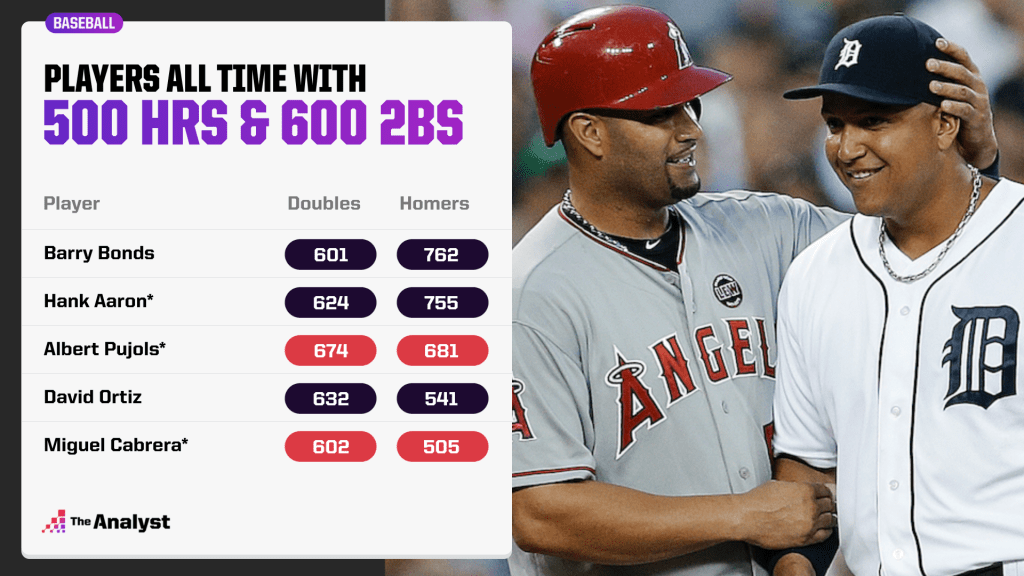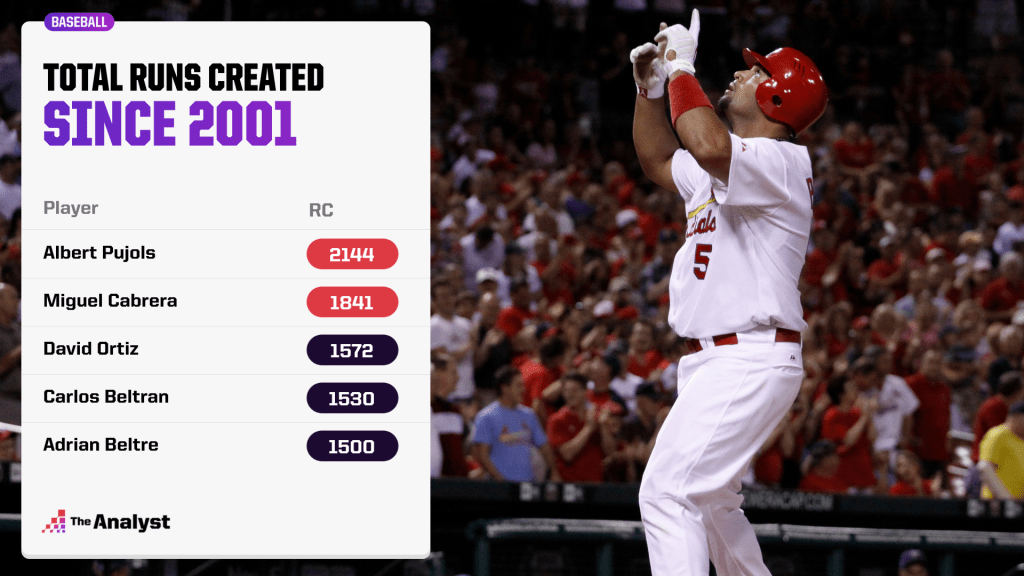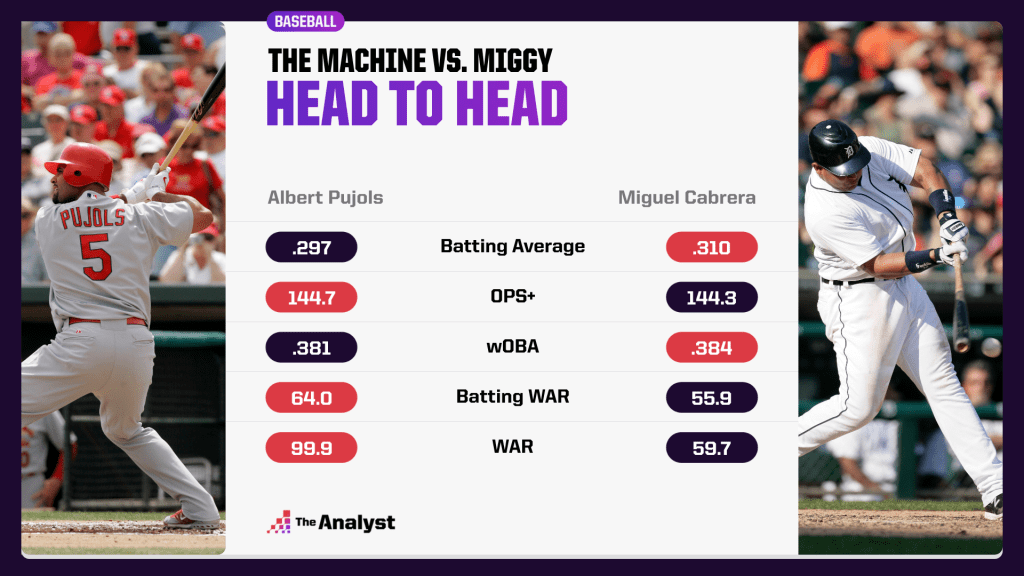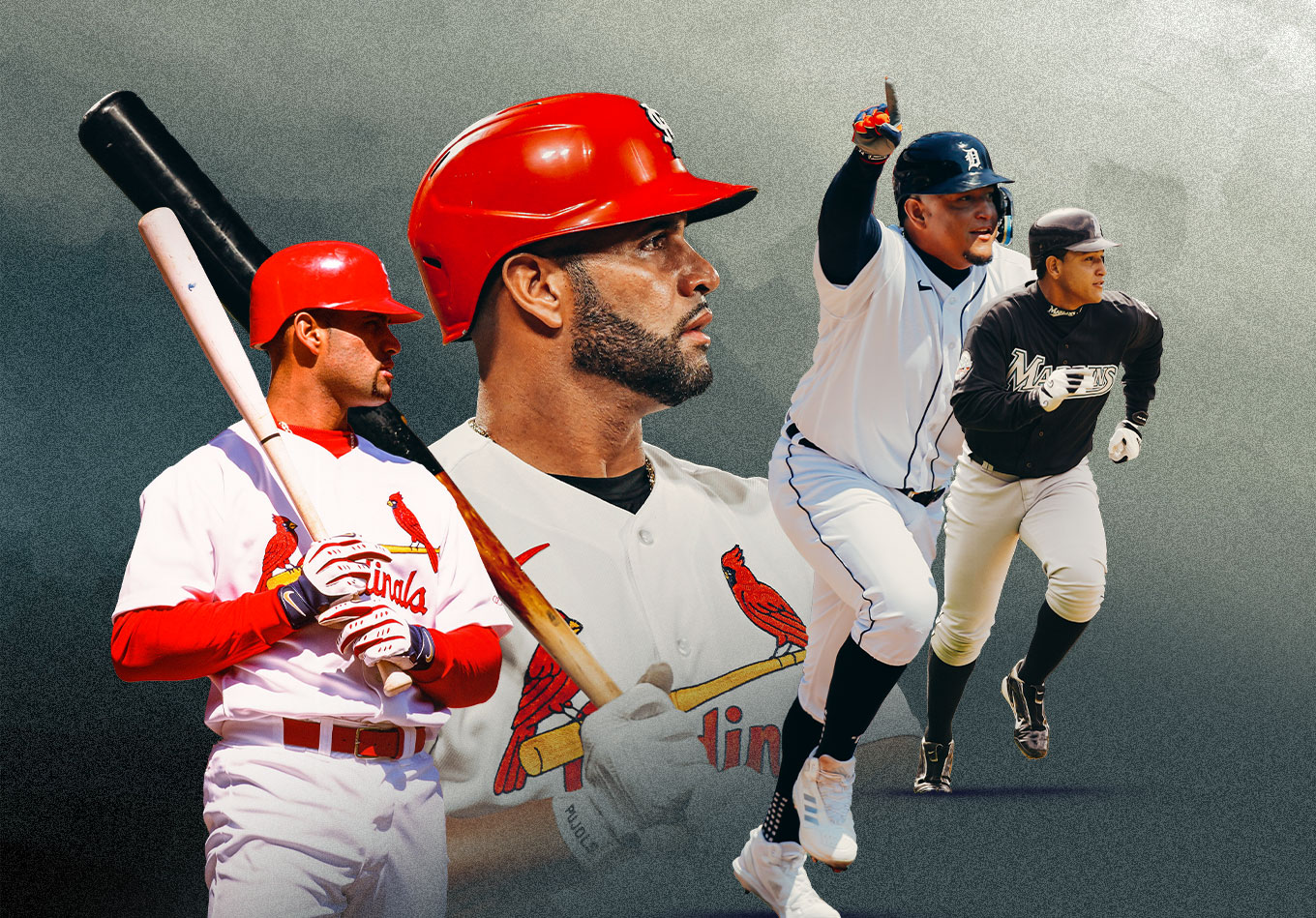Since Mike Trout broke through in 2012, he’s been arguably the best hitter in baseball.
But if we go back a decade before that, two right-handers began dominating the scene for almost 15 years and are now near the end of their respective careers: Albert Pujols and Miguel Cabrera.
Both all-time greats are still active and having bounce-back seasons in different roles: Pujols is an productive lefty-masher, and Cabrera is an everyday player who is performing at an above-average level for the first time since 2020.
Pujols has a 2022 slash line of .236/.354/.382 with a couple of home runs and a .736 OPS. Though it’s clear at this point that his performance against righties (.437 OPS) will keep him off the field a lot, he’s punished lefties to the tune of a 1.419 OPS.
Cabrera, on the other hand, has thrived while playing mostly every game, although obviously not at the level he showed in his prime years. He’s slashing .286/.331/.403 with three home runs, five doubles and a .734 OPS.
He got his 3,000th hit and his 600th double this season and is the only player in the history of MLB with at least 3,000 hits, 600 doubles, 500 home runs, a .300 lifetime average (he is at .310), and a Triple Crown, which he won in 2012.

Who has had a better career? Who is the better player? Who is the better hitter? Who has accomplished more? Those are all interesting questions that require careful analysis.
The Machine
Pujols broke into the scene with a fantastic rookie season in 2001, when he had 88 extra-base hits, drove in 130 runs and had a 1.013 OPS. He was, basically, a 1.000+ OPS hitter for 10 years until 2010 – a remarkable run of excellence.
Pujols’ steep decline phase started in 2013, his second season with the Los Angeles Angels. From that point on, he could never crack .800 OPS again. It’s fair to say Pujols earned most of his achievements in the first half of his career.
Still, his career numbers are awfully impressive. He has slashed .297/.375/.543 with 681 home runs, 2,158 RBI, 674 doubles and a .918 OPS. We are talking about a future first-ballot Hall of Famer who won three MVP awards, was the Rookie of the Year in 2001 and was the best hitter and player on two World Series-winning teams.
Pujols, a sneaky-good defender at first base during his prime, also won two Gold Gloves and went to 10 All-Star games, among other achievements such as six Silver Slugger awards, one batting crown and two home run crowns.

The Wonderkid
Cabrera debuted in 2003, posting a solid .793 OPS with 12 home runs in 87 games as a 20-year-old outfielder. He also played a major role in the then-Florida Marlins’ march to the World Series, going 10 for 30 (.333) with three home runs to help the Marlins come back from a 3-1 deficit against the Chicago Cubs in the National League Championship Series.
And while he didn’t have a particularly good performance in the Fall Classic, everybody remembers his impressive home run against Roger Clemens of the New York Yankees. That was a glimpse of what he would be for the next decade and a half.
Over a span of 13 seasons, Cabrera’s OPS was never lower than .879 and he had three 1.000+ OPS campaigns. Funny enough, the year everybody remembers, 2012, saw him finish with a .999 OPS.
That year, Cabrera won the AL MVP after slashing .330/.393/.606 with 44 home runs and 139 RBI, finishing with the first hitting Triple Crown since Carl Yastrzemski in 1967. Only 16 players in the history of the game have led the league in average, homers and RBI in the same season. (There have been fewer hitting Triple Crowns than perfect games by pitchers.)
As of Thursday morning, Cabrera has a career .310/.387/.531 stat line with 602 doubles, 505 home runs, 1,818 RBI, and a .917 OPS. His two MVP awards (while playing in the same league as Trout), 11 All-Star berths, seven Silver Slugger awards, four batting titles and two home run crowns will also guarantee him a place in Cooperstown.
Who Has The Edge?
Pujols was a much, much better defender than Cabrera (138 defensive runs saved at first base, to Miggy’s minus-37), and that gives him a significant advantage in WAR. The Cardinals’ slugger has accumulated a 99.9 WAR, while Cabrera is at 59.7.
If we compare just offense using batting WAR, Pujols’ edge is much smaller: 64.0 to 55.9. Remember, WAR is a cumulative stat, and Pujols has played 370 more games than Cabrera and received 1,632 additional plate appearances.
Peak performance is firmly on Pujols’ side. From 2001-10, the first baseman hit .331/.426/.624 with 1,186 runs, 426 doubles, 408 homers, 1,230 RBI, 914 walks and 646 strikeouts. He had a .426 wOBA over that time frame with a 1.050 OPS.
A lot of hitters would dream about a 1.000+ OPS season: Pujols averaged that over 10 years.

Of the top 50 seasons by all hitters in batting WAR from 2001-22, Pujols has seven (including the eighth best) while Cabrera has two (the 10th and the 19th). Let’s keep in mind some of Barry Bonds’ best years came after 2001.
Pujols’ run from 2001-10 was something that Cabrera could never really match. However, while Pujols had the better offensive (and defensive) peak, his decline was sudden, while Cabrera’s was a bit more gradual. The Tigers thumper never had a sub-.700 OPS in his career and Pujols has three already (one of them at age 37, whereas Cabrera is currently 39).
Cabrera’s peak was also impressive. From 2004-16, he hit .323/.402/.566 with 502 doubles, 434 home runs and 1,491 RBI over those 13 seasons.
Pujols has the edge in isolated power (.246-.221) and in OPS+ (144.8-144.3). Cabrera, meanwhile, wins in runs created per 27 outs (RC/27) 6.87-6.84 and wOBA .384-.381.
Overall, we can say that while Pujols has been the more productive player by virtue of his superior defense (compared to Cabrera, at least) and better totals, the two stars have been equally productive hitters if we compare career rate stats – one with a better peak (Pujols) and the other with a slightly more graceful decline (Cabrera).
Both will have a place in Cooperstown five years after they retire, but will they be unanimous choices? They sure deserve it.
Design by Matt Sisneros.
Enjoy this? Subscribe to our mailing list to receive exclusive weekly content.
